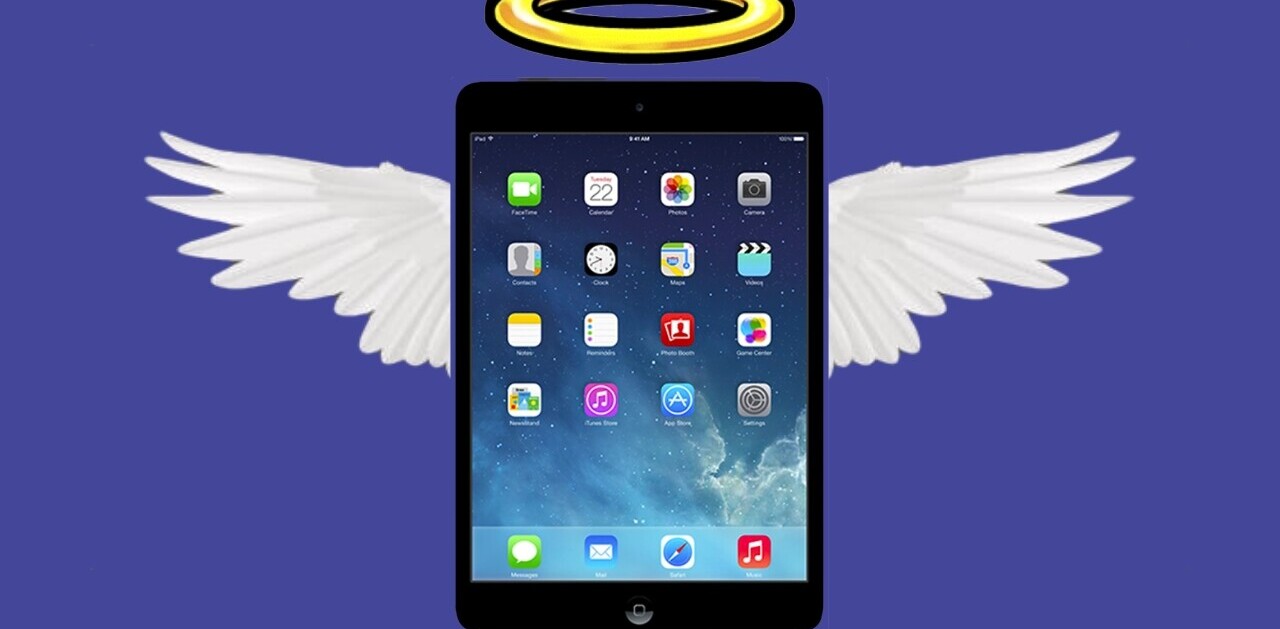
Sometimes it’s easy to start thinking that we’ve seen everything that iPad apps have to offer. It begins to look like permutations of the same interfaces and features remixed in a different way.
Then something like the super clever Foldify comes along and blows you away. An app that combines Papercraft, the art of folding patterns of paper to form 3D objects, the iPad’s screen and Apple’s AirPrint into a super clever package that surprised and delighted me.
The app is developed by the small Polish app house Pixle, and it feels like exactly the sort of thing that the iPad was made for. No, not for folding paper, but for doing things that would feel awkward or less intuitive on the iPhone or another small device. The small team of coder Krzysztof Zabłocki and designers Mariusz and his wife Renata Ostrowski have created something simple, unique and clever, all while working in their ‘spare’ time.
I spoke with Zabłocki about the app, who says that he’s been coding since he was 8 years old. He recently moved to London to work as a Senior iOS engineer at The App Business, who is fine with him working on his side projects.
“We were thinking about different ideas for our next project,” Zabłocki says when I ask him how Foldify came about. “We started by thinking about [doing a] game app with cutting shapes etc. but I didn’t really want to create app for kids, but for everyone.
Zabłocki says that they wanted to find something more technically challenging, and that’s how they settled on Papercraft. Papercraft is the art of designing a three-dimensional figure as a flat pattern on paper. The figure comes to live when you cut and fold it into shape, bearing your designs.
What Foldify does is make that experience less stressful, with no worries about mistakes being made in the drawing or stamping process, and a full three-dimensional model of your design updating live. This allows you to see exactly how it will turn out when you’ve printed it out and folded it up.
The process begins by choosing a simple 3D construct, there are a few now but more will be added in packs later on. Once you’ve picked a construct, you can begin painting with a brush and a color palette. If you’re doing something more complex like a car or figure, there are a bunch of stamps to choose from with things like eyes and glasses or car windows and wheels.
The process feels very touch native, with pinching and twisting motions controlling where your pattern lays on your ‘work’ surface. this is where the ‘iPad-ness’ of the app really kicks in. Instead of using a slider or a picker to choose your brush size, there is only one. Instead, you use pinching and zooming, changing your brush size relative to the canvas. It’s super clever.
“You can’t really change your finger size or make it transparent so that you actually see what are you drawing,” says Zabłocki. “It’s easy to draw with [an] external pen tool for artists, but I wanted to be able to draw with my finger, even a small detail. So, instead of making brush really small and making it extremely hard to draw details, [I thought] let’s just zoom in. The Brush is your finger size, but you are now drawing a detailed image.”
And that’s not the only bit of cleverness in Foldify. It was tested on the iPad 1, which has significantly poorer graphics capabilities than the newer iPads — though it didn’t support it for stability reasons in the end. The ‘creation layer’ of the app gave Zabłocki a lot of trouble getting it just right.
“I’ve had to come up with my own algorithm for line drawing to make sure we can draw smooth and anti-aliased lines,” Zabłocki says, “which for some reason no one [has] ever published.”
Since Zabłocki is a fan of open-source software, he decided to then contribute his reverse engineered method for drawing smoothly, without aliasing. He’s detailed his process in a blog post here, where he describes working backwards from the way lines are drawn in the app Paper by Fifty three.
Once you’ve gotten a design down that you like, printing it is as simple as tapping the print button and choosing an AirPrint printer. I can honestly say that this is the first time I’ve ever used AirPrint on an iPad, and I don’t even have a compatible printer. Instead, I used the HandyPrint preference pane to make mine compatible. If you’ve already got an AirPrint compatible printer, then you’re all set. Otherwise you can export to PDF and print it.
While my figure was a simple one, there are dozens of fantastic creations already up in the online gallery that you can access via Foldify’s main menu. This is where you can upload your designs for others to ‘like’ or print themselves. You can’t download from here, to avoid design theft, but you’re more than welcome to view and print.
In the future, Pixle plans on expanding the stamp packs, 3D models and other options, offering some free to existing users of the app and others for pay to support continued development.
Foldify is one of those apps that you really have to see in action to get, so I encourage you to grab it for the introductory $1.99 price, or at the very least watch the video above. It’s one of those rare surprises that make the App Store great.
Disclosure: This article contains an affiliate link. While we only ever write about products we think deserve to be on the pages of our site, The Next Web may earn a small commission if you click through and buy the product in question. For more information, please see ourTerms of Service.
Get the TNW newsletter
Get the most important tech news in your inbox each week.










